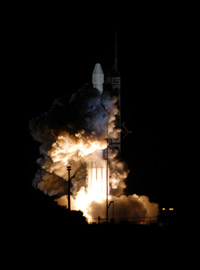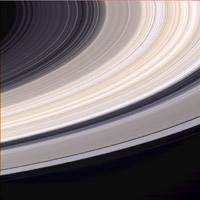
The Astrophysics Spectator

Hubble image of Arp 147, taken October 27 Courtesy NASA, ESA, and M. Livio (STSci).

An image of the supernova remnant CTA 1, which contains a gamma-ray pulsar. Courtesy NASA/S. Pineault, DRAO.

A Delta 2 rocket successfully launches the Messenger spacecraft into space at 6:15:56 GMT from the Cape Canaveral Air Force Station, Florida, USA. Photo credit: Courtesy NASA.

Saturn's ring in its natural colors as seen by the Cassini probe. Photo credit: Courtesy NASA/JPL-Caltech.
